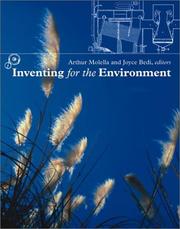| Listing 1 - 6 of 6 |
Sort by
|
Dissertation
ISBN: 9058088243 Year: 2003 Publisher: Wageningen : Wageningen University,
Abstract | Keywords | Export | Availability | Bookmark
 Loading...
Loading...Choose an application
- Reference Manager
- EndNote
- RefWorks (Direct export to RefWorks)
Desertification. --- Desertification --- Semiarid zones --- Climatic change --- meteorological observations --- Air temperature --- relative humidity --- Plant cover --- Geomorphology --- Landscape --- Models --- Geophysics --- Efeda --- Spain
Dissertation
Year: 2003
Abstract | Keywords | Export | Availability | Bookmark
 Loading...
Loading...Choose an application
- Reference Manager
- EndNote
- RefWorks (Direct export to RefWorks)
In this work, the principles and methods of geomorphopedology used as landscape comprehension "keys", have been evaluated and implemented in order to develop and put forward an integrated cartography of the steppic environment. The observations and surveys inherent to this method highlight the relations between the landscape forms, superficial formations, correlated soils, vegetation, and farming systems developed by the local populations. This approach has proved to be extremely well suited to understanding the soil genesis and in particular the shape of the associated calcareous accumulations in function of space and in time factors. The findings of specific analyses carried out using methods and techniques of several disciplines (mineralogy, micromorphology, palynology and C14 dating) throw light on the desertification process in space and time. For instance, analysis of pollen samples on soils of terraces from the Holocene (old and recent Rharbian) to the present time, have shown the clear dominance of a tree vegetation during the Neolithic period and its gradual decline. This implies that a progressive aridification of the climate has occurred since the Neolithic period (old Rharbian). This can be considered as a primary cause of the degradation of the steppic environment, making it more sensitive to the impact of anthropic factors.
Steppes --- Geomorphology --- Soil sciences --- soil genesis --- land use --- Landscape --- Desertification. --- Desertification --- Palynology --- Climatology --- human population --- Environmental impact --- Algeria
Dissertation
Year: 2003
Abstract | Keywords | Export | Availability | Bookmark
 Loading...
Loading...Choose an application
- Reference Manager
- EndNote
- RefWorks (Direct export to RefWorks)
Desertification. --- Desertification --- Dunes --- Wind erosion --- Soil stabilization --- erosion control --- Erosion control plants --- sociocultural environment --- Appropriate technology --- economic environment --- Facteur limitant --- Interuniversitaire --- Ulg --- Ful --- Niger
Dissertation
Year: 2003
Abstract | Keywords | Export | Availability | Bookmark
 Loading...
Loading...Choose an application
- Reference Manager
- EndNote
- RefWorks (Direct export to RefWorks)
Dunes --- Desertification. --- Desertification --- Soil stabilization --- Windbreaks --- Revegetation plants --- Drought resistance --- Soil water regimes --- Soil water balance --- Acacia senegal --- Acacia tortilis --- Prosopis juliflora --- Prosopis chilensis --- Leptadenia pyrotechnica --- Niger
Dissertation
Year: 2003
Abstract | Keywords | Export | Availability | Bookmark
 Loading...
Loading...Choose an application
- Reference Manager
- EndNote
- RefWorks (Direct export to RefWorks)
Panicum --- Rainfed farming --- Vigna unguiculata --- fallow --- soil fertility --- Deforestation --- Desertification. --- Desertification --- Yields --- Productivity --- Fertilizer application --- organic matter --- agroforestry --- Mixed farming --- Diversification --- socioeconomic environment --- Agricultural policies --- Niger

ISBN: 0262280094 0585480869 9780262280099 9780585480862 0262134276 9780262134279 Year: 2003 Publisher: Cambridge, Mass. : MIT Press in association with Lemelson Center, Smithsonian Institution, Washington, D.C.,
Abstract | Keywords | Export | Availability | Bookmark
 Loading...
Loading...Choose an application
- Reference Manager
- EndNote
- RefWorks (Direct export to RefWorks)
Essays by historians and practioners on how invention can benefit the environment.This ambitious book describes the many ways in which invention affects the environment (here defined broadly to include all forms of interaction between humans and nature). The book starts with nature itself and then leads readers to examine the built environment and then specific technologies in areas such as public health and energy.Each part focuses on a single environmental issue. Topics range widely, from the role of innovation in urban landscapes to the relationship among technological innovation, public health, and the environment. Each part features an essay by a historian, an essay by a practitioner, and a "portrait of innovation" describing an individual whose work has made a difference. The mixture of historians and practitioners is critical because statements about the environment inevitably measure present and future conditions against those of the past. Early in the industrial revolution, smoke stacks were symbols of prosperity; at its end they were regarded as signs of pollution. Historical examples can also lead to the rediscovery of an old technology, as in the revival of straw bale construction. As it explores the history of invention for the environment, the book suggests many new ways to put the past to use for the common good.
Technological innovations --- Technology --- Ecology. --- Environment. --- Technology. --- Conservation of Natural Resources. --- Engineering & Applied Sciences --- Technology - General --- Environmental aspects. --- Environmental Science --- Bionomics --- Ecologies --- Environmental Sciences --- Science, Environmental --- Sciences, Environmental --- Carrying Capacity --- Deforestation --- Desertification --- Environmental Protection --- Natural Resources Conservation --- Protection, Environmental --- Sustainable Development --- Capacities, Carrying --- Capacity, Carrying --- Carrying Capacities --- Conservation, Natural Resources --- Development, Sustainable --- Arts, Industrial --- Industrial Arts --- Environmental Impact --- Environmental Impacts --- Impact, Environmental --- Impacts, Environmental --- Environments --- Balance of nature --- Biology --- Ecological processes --- Ecological science --- Ecological sciences --- Environment --- Environmental biology --- Oecology --- Ecology --- Environmental Psychology --- Conservation of Natural Resources --- Environmental Health --- Ecosystem --- Natural Resources --- Cloud Computing --- Environmental sciences --- Population biology --- SCIENCE, TECHNOLOGY & SOCIETY/General --- ENVIRONMENT/General --- Environmental protection. Environmental technology
| Listing 1 - 6 of 6 |
Sort by
|

 Search
Search Feedback
Feedback About UniCat
About UniCat  Help
Help News
News